Breaking the GTM code: Slack's biggest secrets finally revealed
Breaking the GTM code: Slack's biggest secrets finally revealed
Breaking the GTM code: Slack's biggest secrets finally revealed
Why a >120% NRR is a science, not a magic trick
Why a >120% NRR is a science, not a magic trick
Why a >120% NRR is a science, not a magic trick
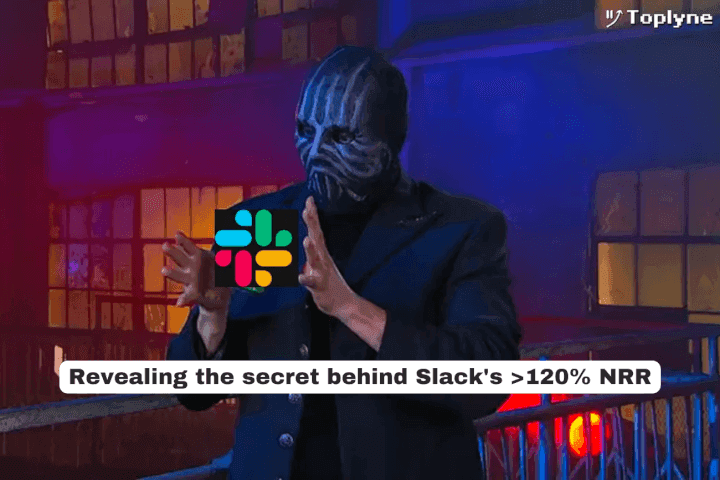


Over the course of a career marred by lawsuits, death threats, and many death stares at many Vegas casinos from fellow magicians, Val Valentino, became a strong candidate for the ignominious title of ‘working professional most hated by his peers.’
His crime? Breaking the magician’s code. Besides the greatest hits - the death saw, levitation, and making elephants disappear, Val took his audience behind the scenes of some of magic’s most closely guarded secrets.

In ‘98, he was sued for $500k by Andre Kole, the creator of an illusion wherein the magician escapes from a falling bed of spikes: A 20th-century trick known as the Death of Cora.
Kevin and Cindy Spencer came after Val too. Two illusions from their repertoire: “The shadow box” and “Houdini’s torture cell,” which cost over $50k to develop had to be thrown in the trash now that the cats were out of the bag.
A woman appears from the shadows. A man escapes from a locked water-filled container. Doesn’t sound like there’s much to it.
At Dreamforce last year, Slack presented a six-tile grid that powers their segmentation engine. It was simplicity itself.

Doesn’t look like there’s much to it. Until you Val Valentino it.
Those six tiles across two axes and the triggers powering user-hops across these tiles were the product of two years of Engineering Blog & data science hours and anywhere between $1M-$3M in combined cost.
Here’s the masked magician Val Valentino on why he agreed to do the Fox show:
“I felt that revealing these secrets would encourage children into trying magic instead of discouraging them”
This is the spirit in which we’re tearing down Slack’s segmentation engine today. This sh*t is difficult to build. But there’s neither magic here, nor art.
Why now?
That’s a fair question to ask. Val had his reasons.
“The main reason I did the program was to get Magicians talking about the future of the Magical Arts as the Internet was about to change everything.”
We have ours.
Earlier this week, I co-hosted a live event with Paddle’s CMO Andrew Davies.
“Product-led revenue during economic downturns.” This is what Andrew and I spoke about for about an hour. We could have kept going. But in breaking down data from ~35k businesses, three things stood out to me:
The best subscription businesses in the world have at least 20% of their revenue being driven by expansion.
That number has grown in the last year. In the top quartile, that number clocks in at ~40%.
Net Revenue Retention is not an art. It’s a science. Which means you can engineer it too.
What does that mean for subscription businesses? Over the last year, many discovered that they were sitting on a goldmine, but without the picks and shovels to drive expansion motions at scale.
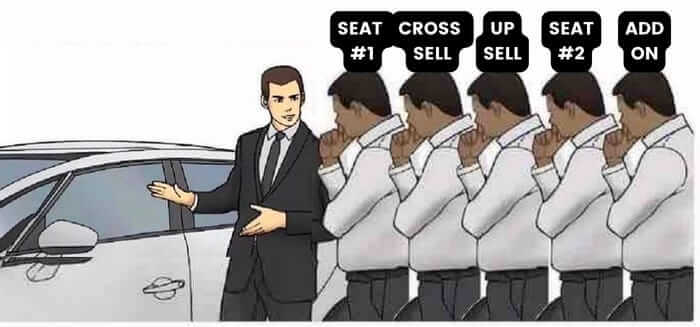
The best of the lot figured out the science and went out looking for picks and shovels. Many still think it’s an artistic endeavor.
My contention is that it’s not. Here’s why.
Expansion as a % of growth is… expanding
But first, a little about you, and that rich vein of gold telluride you’re sitting on.
Over the last year, among the top quartile, the percentage of revenue growth attributable to expansion has grown to ~40%.
The very best are driving ~40% of their growth - during a downturn - with powerful expansion motions. Turns out it IS easier to sell where you’ve already sold something.
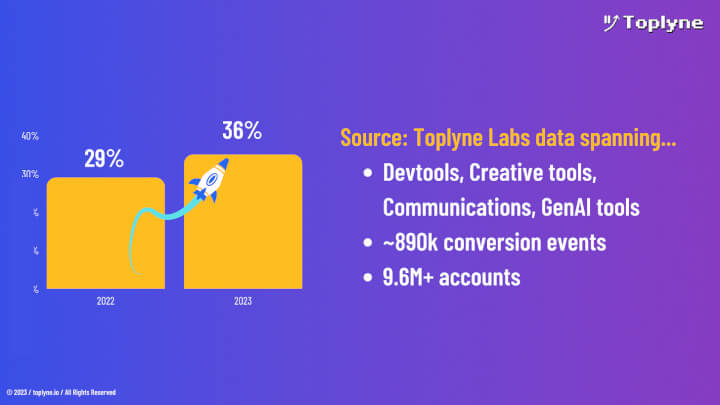
Aristotle may well have been on to something when he said “The aim of art is to represent not the outward appearance of things, but their inward significance.” That ore of gold? That’s your current user base.
It might be time for SaaS to look inward, but let’s bust a myth straight off the bat here.
There’s no art at play here.
The “art” of Net Revenue Retention
Let’s look at some usual suspects here known for strong PMF, hyper-effective network effects, and collaborative features. These logos have land-and-expand embedded in their genetic makeup.
It won’t surprise you that >40% of their net new revenue is driven by expansion.
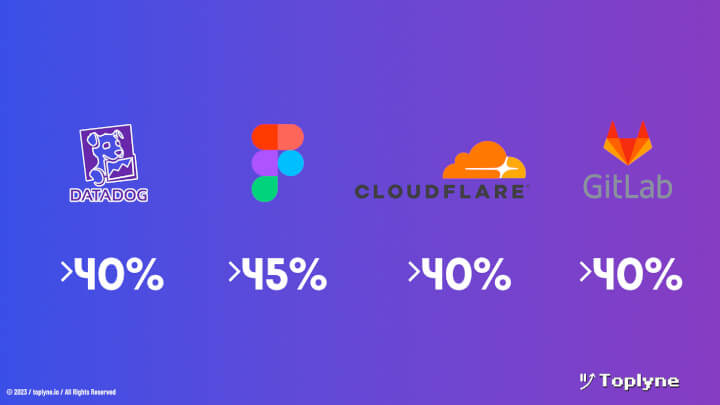
Sure, finding product-market fit might be an art. And these companies have hit the motherlode and found their way into the Academie des Beaux-Arts, where their logos now hang on the walls.
It’s tempting to think that their Net Revenue Retention (NRR) is a product of art.
…until you see this:
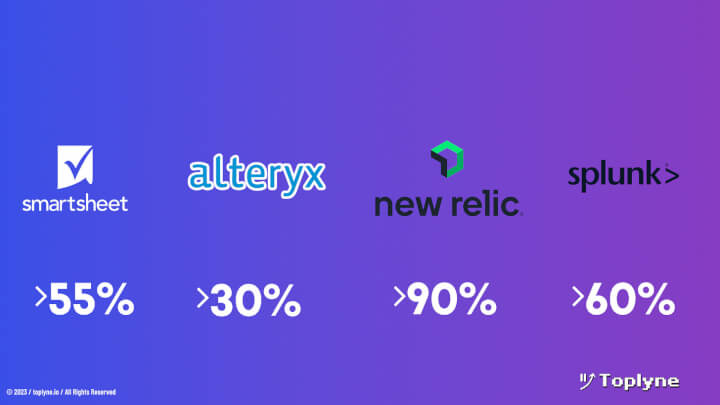
Not names you would usually associate with the sort of virality or expansion levers you’d find in a Figma, a Gitlab, or a Datadog, are they?
Look at the numbers again. Smartsheet, Alteryx, New Relic, Splunk - all notoriously clunky tools to use, all have anywhere between 30-90% of their new revenue being driven by expansion. The old timers are on to something.
This is no fluke. Expansion is a solved science. It’s a tough science, but it’s a solved one.
Slack’s NRR hovers around the 120% mark according to the latest available fiscal year results. And the behemoth powering this Houdini Cell magic trick is a carefully crafted marvel of data science and Engineering Blog.

BTS: The Pledge
The magician shows you something ordinary: a deck of cards, a bird, or a man.
Slack distilled this magic to a number and made it popular: 2,000.
A team of 10 or more, exchanging over 2,000 messages within 1 week had 93% retention in the long term. And so for Slack, anyone who crossed this magic number was a Product-Qualified Lead.
At the core of the spell animating their go-to-market motion sits a segmentation engine built in-house.

Six personas that every account is mapped to depending on where they are in their user journey.
Sounds simple. Let’s play that back. How is this segmentation put into effect?
To pull in team sizes, Slack taps into their subscription data. Aggregated and stitched at a user-team-account level.
To measure engagement, product analytics. Something like a Segment, Mixpanel, or Amplitude.
Acquisition source is pulled in through data from marketing channels.
Headroom for expansion and team size is measured by 3rd party enrichment.

If you’re on Slack’s GTM team, you want every new user to eventually be taken to that top right corner and become that orange tile: “The Committed.”
Each of those tile hops is powered by a GTM touch. Creators become connectors through lifecycle e-mails. Connectors become engagers through in-app nudges prompted to them. Sales or sales-assist teams step in to then convert them to “Committed.”
BTS: The turn
The magician takes the dove and makes it do something extraordinary. Like, make the dove disappear.
The Slack recipe to drive upsells and conversions is rooted in five fundamental components. When it comes to driving this at scale, across the board, what separates the wheat from the chaff - the best from the rest - is their ability to:
#1 Drive a multi-modal GTM
They’re all GTM agnostic, and consciously nudge users in the right place at the right time, across a plethora of channels.
#2 Set up a *chef’s kiss* GTM infra
They’ve all set up the infra to power their multi-modal GTM. Ways to measure engagement, and ways to boost it - across sales, marketing, account management, and product growth.

#3 Make disparate pieces talk to each other
Some Engineering Blog magic here, that makes product analytics and enrichment talk to your CRM, and for all of this measurement to live centrally in a warehouse.
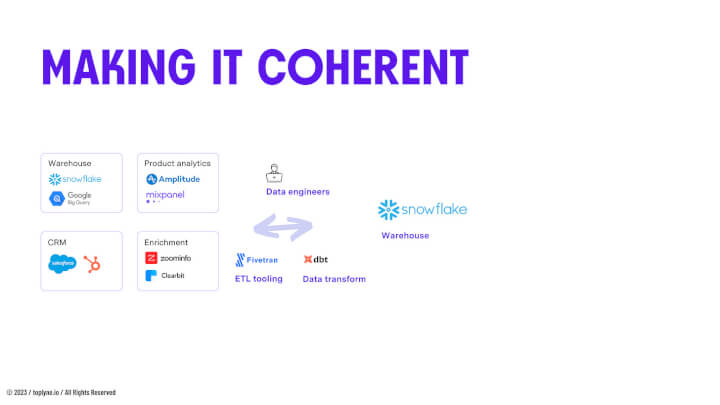
#4 Add intelligence
And to bring the data to life and draw meaning from it, a smattering of data science magic.
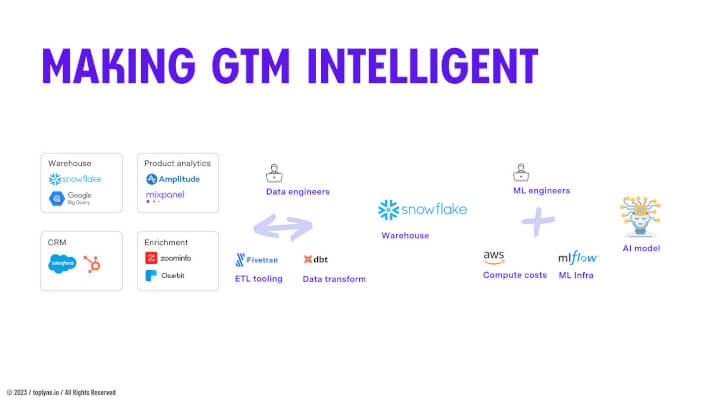
BTS: The Prestige
But you wouldn't clap yet. Because making something disappear isn't enough; you have to bring it back. That's why every magic trick has a third act, the hardest part, the part we call "The Prestige".
#5 Make intelligence actionable
All of that intelligence is then put into action through a carefully orchestrated GTM. Qualified users are reached through the right channel, with the right messaging, personalized to just the right amount, at the exact time they’re ready to hop tiles.
Every user-touch stands on the shoulders of a feat of Engineering Blog that stitches disparate data together, makes it coherent, and channels it to an end-point that the user prefers with the intelligence given to it by AI models that bring it to life.
Like a million Rube Goldberg machines set into motion all at the same time.
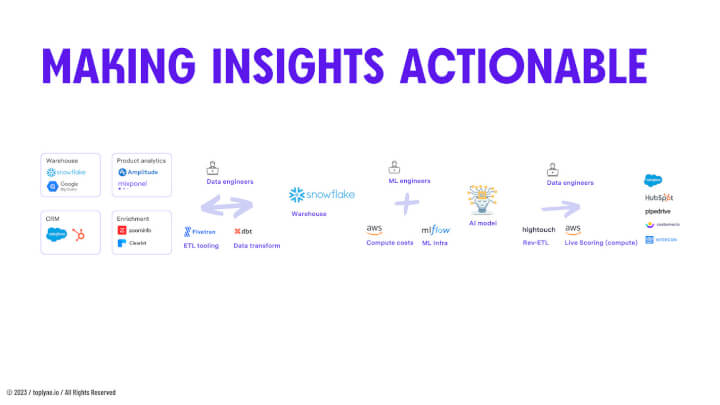
The Val lawsuits would be worth over a million dollars today. The simplicity of the prestige masked over a million dollars worth of sophistication.
It shouldn’t escape you that the Alteryx, New Relic, and the other old-timers are in rarefied air.
To set such an engine as Slack into motion takes a small matter of (we measured this) anywhere between 3-8 quarters with 3-4 data scientists, 3-4 data engineers, and a small price of $1M - $3M a year. Recurring.
It’s science. But it’s expensive science. As Val and the production team at Fox will tell you.
Over the course of a career marred by lawsuits, death threats, and many death stares at many Vegas casinos from fellow magicians, Val Valentino, became a strong candidate for the ignominious title of ‘working professional most hated by his peers.’
His crime? Breaking the magician’s code. Besides the greatest hits - the death saw, levitation, and making elephants disappear, Val took his audience behind the scenes of some of magic’s most closely guarded secrets.

In ‘98, he was sued for $500k by Andre Kole, the creator of an illusion wherein the magician escapes from a falling bed of spikes: A 20th-century trick known as the Death of Cora.
Kevin and Cindy Spencer came after Val too. Two illusions from their repertoire: “The shadow box” and “Houdini’s torture cell,” which cost over $50k to develop had to be thrown in the trash now that the cats were out of the bag.
A woman appears from the shadows. A man escapes from a locked water-filled container. Doesn’t sound like there’s much to it.
At Dreamforce last year, Slack presented a six-tile grid that powers their segmentation engine. It was simplicity itself.

Doesn’t look like there’s much to it. Until you Val Valentino it.
Those six tiles across two axes and the triggers powering user-hops across these tiles were the product of two years of Engineering Blog & data science hours and anywhere between $1M-$3M in combined cost.
Here’s the masked magician Val Valentino on why he agreed to do the Fox show:
“I felt that revealing these secrets would encourage children into trying magic instead of discouraging them”
This is the spirit in which we’re tearing down Slack’s segmentation engine today. This sh*t is difficult to build. But there’s neither magic here, nor art.
Why now?
That’s a fair question to ask. Val had his reasons.
“The main reason I did the program was to get Magicians talking about the future of the Magical Arts as the Internet was about to change everything.”
We have ours.
Earlier this week, I co-hosted a live event with Paddle’s CMO Andrew Davies.
“Product-led revenue during economic downturns.” This is what Andrew and I spoke about for about an hour. We could have kept going. But in breaking down data from ~35k businesses, three things stood out to me:
The best subscription businesses in the world have at least 20% of their revenue being driven by expansion.
That number has grown in the last year. In the top quartile, that number clocks in at ~40%.
Net Revenue Retention is not an art. It’s a science. Which means you can engineer it too.
What does that mean for subscription businesses? Over the last year, many discovered that they were sitting on a goldmine, but without the picks and shovels to drive expansion motions at scale.

The best of the lot figured out the science and went out looking for picks and shovels. Many still think it’s an artistic endeavor.
My contention is that it’s not. Here’s why.
Expansion as a % of growth is… expanding
But first, a little about you, and that rich vein of gold telluride you’re sitting on.
Over the last year, among the top quartile, the percentage of revenue growth attributable to expansion has grown to ~40%.
The very best are driving ~40% of their growth - during a downturn - with powerful expansion motions. Turns out it IS easier to sell where you’ve already sold something.

Aristotle may well have been on to something when he said “The aim of art is to represent not the outward appearance of things, but their inward significance.” That ore of gold? That’s your current user base.
It might be time for SaaS to look inward, but let’s bust a myth straight off the bat here.
There’s no art at play here.
The “art” of Net Revenue Retention
Let’s look at some usual suspects here known for strong PMF, hyper-effective network effects, and collaborative features. These logos have land-and-expand embedded in their genetic makeup.
It won’t surprise you that >40% of their net new revenue is driven by expansion.

Sure, finding product-market fit might be an art. And these companies have hit the motherlode and found their way into the Academie des Beaux-Arts, where their logos now hang on the walls.
It’s tempting to think that their Net Revenue Retention (NRR) is a product of art.
…until you see this:

Not names you would usually associate with the sort of virality or expansion levers you’d find in a Figma, a Gitlab, or a Datadog, are they?
Look at the numbers again. Smartsheet, Alteryx, New Relic, Splunk - all notoriously clunky tools to use, all have anywhere between 30-90% of their new revenue being driven by expansion. The old timers are on to something.
This is no fluke. Expansion is a solved science. It’s a tough science, but it’s a solved one.
Slack’s NRR hovers around the 120% mark according to the latest available fiscal year results. And the behemoth powering this Houdini Cell magic trick is a carefully crafted marvel of data science and Engineering Blog.

BTS: The Pledge
The magician shows you something ordinary: a deck of cards, a bird, or a man.
Slack distilled this magic to a number and made it popular: 2,000.
A team of 10 or more, exchanging over 2,000 messages within 1 week had 93% retention in the long term. And so for Slack, anyone who crossed this magic number was a Product-Qualified Lead.
At the core of the spell animating their go-to-market motion sits a segmentation engine built in-house.

Six personas that every account is mapped to depending on where they are in their user journey.
Sounds simple. Let’s play that back. How is this segmentation put into effect?
To pull in team sizes, Slack taps into their subscription data. Aggregated and stitched at a user-team-account level.
To measure engagement, product analytics. Something like a Segment, Mixpanel, or Amplitude.
Acquisition source is pulled in through data from marketing channels.
Headroom for expansion and team size is measured by 3rd party enrichment.

If you’re on Slack’s GTM team, you want every new user to eventually be taken to that top right corner and become that orange tile: “The Committed.”
Each of those tile hops is powered by a GTM touch. Creators become connectors through lifecycle e-mails. Connectors become engagers through in-app nudges prompted to them. Sales or sales-assist teams step in to then convert them to “Committed.”
BTS: The turn
The magician takes the dove and makes it do something extraordinary. Like, make the dove disappear.
The Slack recipe to drive upsells and conversions is rooted in five fundamental components. When it comes to driving this at scale, across the board, what separates the wheat from the chaff - the best from the rest - is their ability to:
#1 Drive a multi-modal GTM
They’re all GTM agnostic, and consciously nudge users in the right place at the right time, across a plethora of channels.
#2 Set up a *chef’s kiss* GTM infra
They’ve all set up the infra to power their multi-modal GTM. Ways to measure engagement, and ways to boost it - across sales, marketing, account management, and product growth.

#3 Make disparate pieces talk to each other
Some Engineering Blog magic here, that makes product analytics and enrichment talk to your CRM, and for all of this measurement to live centrally in a warehouse.

#4 Add intelligence
And to bring the data to life and draw meaning from it, a smattering of data science magic.

BTS: The Prestige
But you wouldn't clap yet. Because making something disappear isn't enough; you have to bring it back. That's why every magic trick has a third act, the hardest part, the part we call "The Prestige".
#5 Make intelligence actionable
All of that intelligence is then put into action through a carefully orchestrated GTM. Qualified users are reached through the right channel, with the right messaging, personalized to just the right amount, at the exact time they’re ready to hop tiles.
Every user-touch stands on the shoulders of a feat of Engineering Blog that stitches disparate data together, makes it coherent, and channels it to an end-point that the user prefers with the intelligence given to it by AI models that bring it to life.
Like a million Rube Goldberg machines set into motion all at the same time.

The Val lawsuits would be worth over a million dollars today. The simplicity of the prestige masked over a million dollars worth of sophistication.
It shouldn’t escape you that the Alteryx, New Relic, and the other old-timers are in rarefied air.
To set such an engine as Slack into motion takes a small matter of (we measured this) anywhere between 3-8 quarters with 3-4 data scientists, 3-4 data engineers, and a small price of $1M - $3M a year. Recurring.
It’s science. But it’s expensive science. As Val and the production team at Fox will tell you.
Related Articles




Behavioral Retargeting: A Game-Changer in the Cookieless Era
Unlock the power of behavioral retargeting for the cookieless future! Learn how it personalizes ads & boosts conversions. #behavioralretargeting




All of Toplyne's 40+ Badges in the G2 Spring Reports
Our customers awarded us 40+ badges in G2's Summer Report 2024.




Unlocking the Full Potential of Google PMax Campaigns: Mastering Audience Selection to Double Your ROAS
Copyright © Toplyne Labs PTE Ltd. 2024
Copyright © Toplyne Labs PTE Ltd. 2024
Copyright © Toplyne Labs PTE Ltd. 2024
Copyright © Toplyne Labs PTE Ltd. 2024